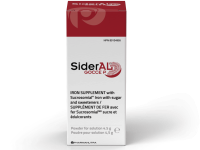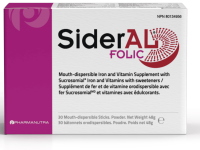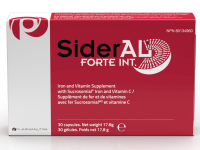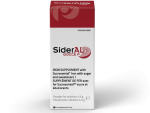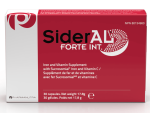Sara’s Story: How One Teen Beat Iron Deficiency and Won Gold
Published 27 Sept 2025
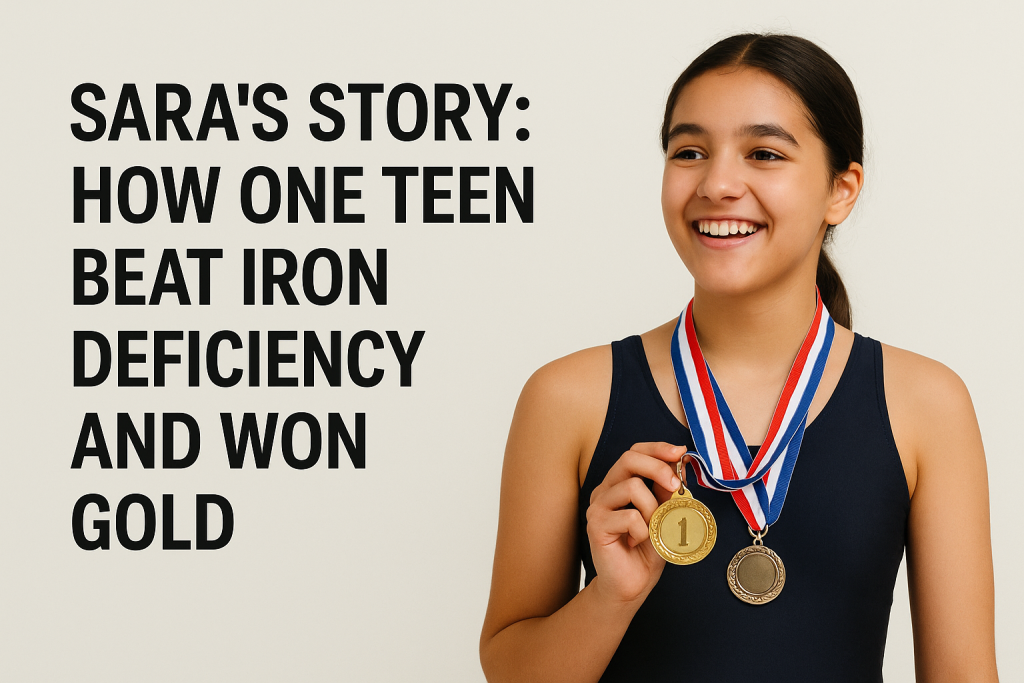
The Problem: When Energy Suddenly Disappears
Sara is 15. She should be unstoppable.
Instead, she can barely get out of bed.
Despite a full night’s sleep, her energy is gone. Just months ago, she was smashing her personal bests in the pool, proud to wear her school’s swim team colors. But lately, her times are slipping. Her spark is slipping.
Her mom remembers this story all too well — because it was her story, too. At the same age, she was told she had iron deficiency.
What the Tests Revealed
So they went to the doctor. Blood work showed a hemoglobin of 119 g/L — “low, but not too bad.” Yet the real shock was her ferritin: 9 µg/L.
That number means empty iron stores. For comparison, healthy levels should be above 50 µg/L — ideally over 100 µg/L. Sara’s body was running on fumes.
The First Fix That Failed
The solution seemed obvious: Ferramax® 150 mg/day.
It’s the same prescription countless other teenagers get in Toronto.
But within two days, the “cure” was worse than the problem. Sara couldn’t shake the nausea. She wasn’t just missing swim practice — she couldn’t get through a normal day.
So, they stopped.
A Different Kind of Iron
That’s when her mom heard about something new. Not new to the world — it had already been the market leader in Europe for over a decade — but new to Canada.
A different kind of iron: SiderAL® Sucrosomial® Iron.
Sara started at 30 mg/day, the standard dose.
The Results After One Month
One month later her hemoglobin was 140 g/L.
Her ferritin had soared to 290 µg/L.
But more important than any lab number: Sara felt like Sara again.
Her energy was back. Her mood was brighter. And at the regional swim meet, she brought home two medals — silver and gold — and new personal bests.
Why This Matters
Iron deficiency is the most common nutritional deficiency in the world, affecting 38% of Canadian women of reproductive age.
The fatigue, the brain fog, the loss of performance — it’s real. And so are the side effects of conventional iron. More than 70% of patients stop taking it because their gut can’t handle it.
But here’s what makes SiderAL® different:
- Less than 5% of patients report any side effects.
- Its effect on hemoglobin is virtually the same as intravenous iron — without the IV.
What To Do If You’re Tired
If you’re tired… if you’re wondering why… it could be iron.
Don’t guess. Ask your doctor to check not just your hemoglobin, but also your ferritin. Because sometimes the difference between exhaustion and possibility is just one number.
Next Steps (CTA)
🌍 External resource: World Health Organization – Iron Deficiency Facts
📩 Subscribe to our newsletter for more real-world stories about iron deficiency and treatment breakthroughs by entering your email in our Contact page
📖 Read more: The silent epidemic that is plaguing Ontario: The Toronto Star
Read more
Sigma Life Sciences
1009 Burns St. E, Whitby ON L1N 6A6
Tel. (905) 430-8440
contact@sigma-lifesciences.com
